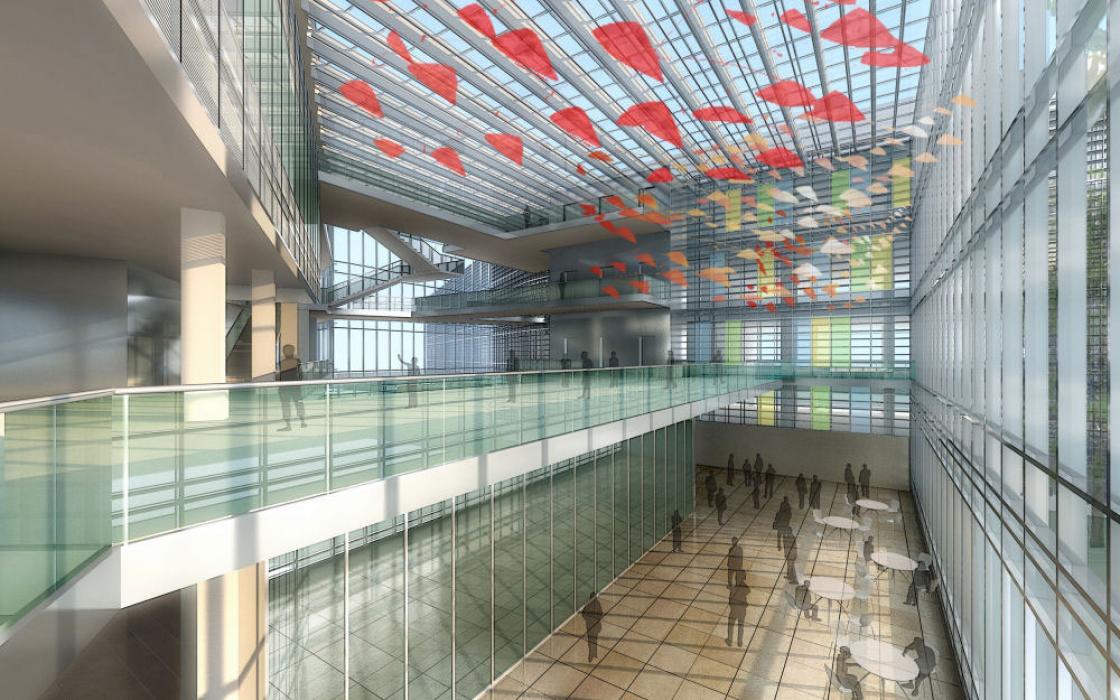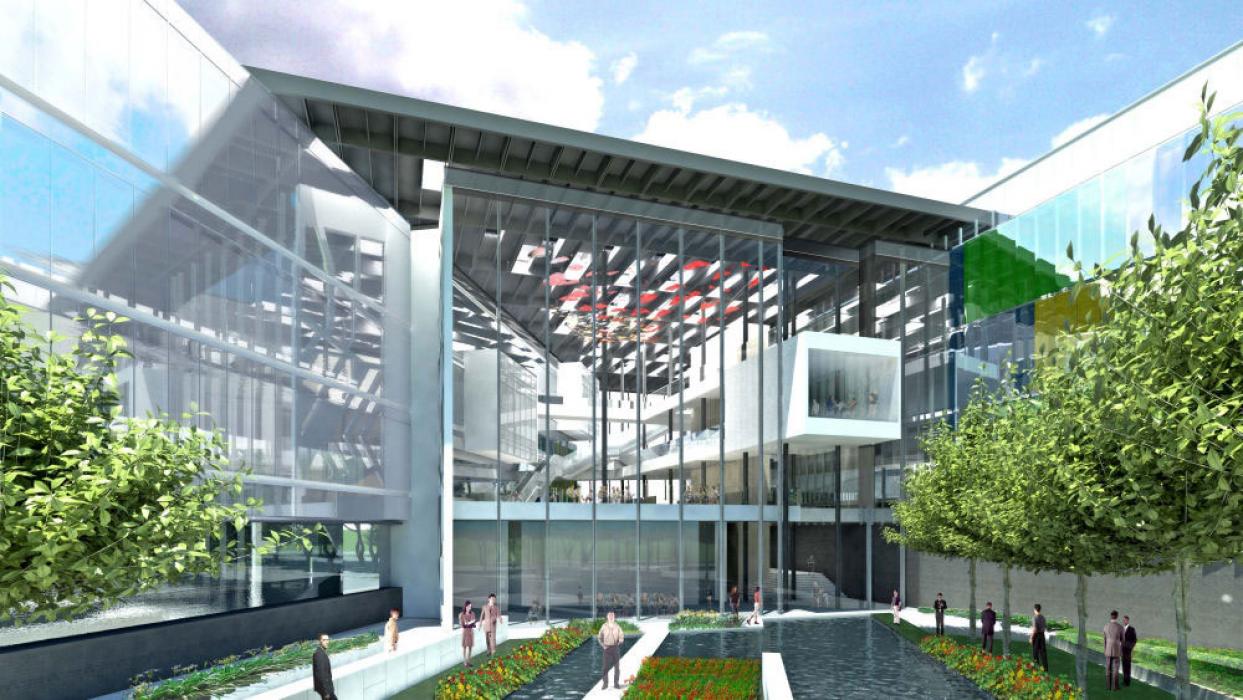Sanofi Genzyme Atrium
The atrium in the Sanofi Genzyme research and development center is purposeful, inspired by the biotech’s and architect’s mutual commitment to environmental responsibility.
The Elegance of Steel and Glass Interaction
In 2011 Sanofi Genzyme, one of the world’s largest biotechnology companies, built a new research and development center in Beijing’s Zhongguancun Life Science Park, the city’s emerging research, development and technology hub. Connecting the facility’s new wings is the building’s signature four-story, glass-enclosed atrium featuring horizontal bridges, plazas and green spaces. The atrium’s design was purposeful, inspired by the biotech’s and architect’s mutual commitment to environmental responsibility.
We provided structural design and façade engineering services to RMJM Hillier for the atrium, which focuses on green design and the elegance of steel and glass interaction. The project was completed in 2011.
Highlights
- We created an integrated structural system that increases efficiency while following the architect’s vision of delicate, split structural elements.
- The atrium features two glass façades with unique entrances, one with a canopied entrance vestibule and the other set back beneath a cantilevered conference room.
- The atrium was designed with its own lateral system independent from the adjacent buildings and the vestibule canopy was designed to maximize length while minimizing structure.
- The glass and aluminum paneled roof floats above the atrium and eight supporting built-up cruciform columns.
- The façade split mullions return to become the secondary members of the roof system, creating a seamless transition between wall and ceiling.
- One of the design challenges included the cruciform columns and double plates for the roof beams and façade mullions.
- Because cruciform columns are not the most efficient type of column and are difficult to interact with plates and beams, we designed a system that worked together to accomplish the architect’s vision.



